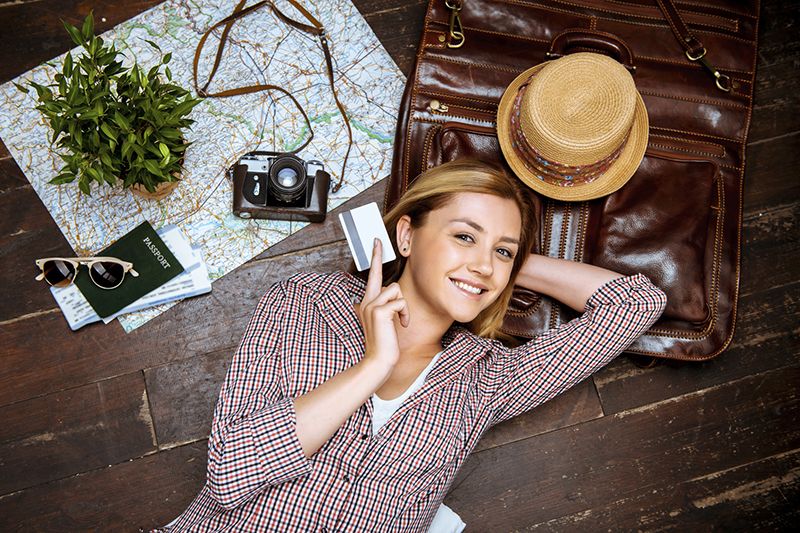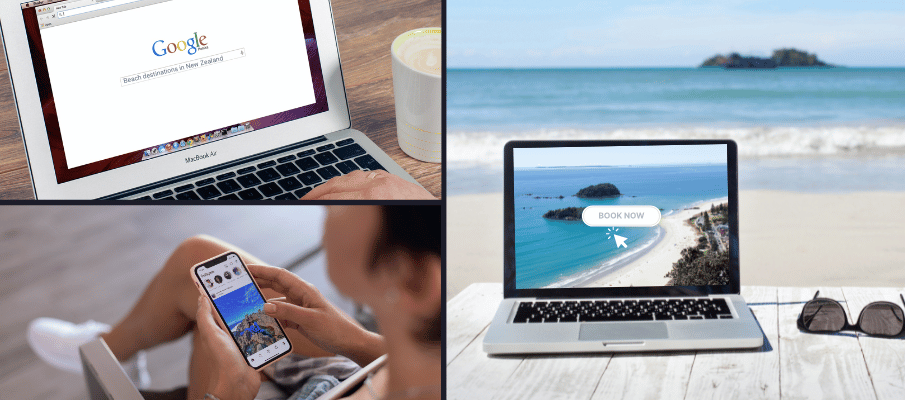The Power of the Female Traveller
By Tomahawk on
The majority voice of travel is now more powerful than ever. She’s the female traveller, and her fistful of dollars packs a serious punch.
“The female dollar,” “the gatekeeper,” “the adventure traveler” – referred to by various monikers for her value in group, family, and solo travel, her nature as a planner is intrinsically tied to revenue potential in tourism. Her collective opinion can make or break a travel business. She’s ascended to absolute power in trip planning and she rocks a size 12 dress.
If your business has roots in tourism, make sure there’s a marketing strategy in place speaking directly to women. Why? Because the value is mind blowing.

Dollar Power
Women make up the bulk of travel’s target market. According to Forbes, this segment makes 80% of travel decisions. That’s a huge footprint - often overlooked towards more granular demographics.
Let’s not forget that when ladies travel, they’re willing to spend. On average, they spend more on tours, activities, and excursions than males. Their purchases trend higher during trips, as 15% of women are more likely to spend over $265 (USD) per day, in comparison to just 5% of men (UK data.)
That’s just the start.
When women plan travel experiences, they speak both for themselves and the intentions of many. No matter their age, women control the purse strings for family travel and group trips, embodying what some call “the gatekeeper effect.”
Solo trips? Also on the rise, with cultural delays in having children and the rise of Baby Boomers. According to the Travel Industry Association, ~ 32 million single women traveled last year, with a third of them traveling five times or more. For leisure travel, the US Travel Association notes that 11% of adults are women traveling on their own.
Experiential Travel Planning
This influence comes down to biology. Women think, behave, plan, travel and tour differently than men.
Per the Harvard Business Review, women assimilate and integrate disparate pieces of information in part due to having larger white matter in the brain, whereas men’s brains are geared for tasks geared in sheer processing.
In terms of shopping, females work in “discovery mode” while men prefer mission based transactions. Women are always working on a master plan.
Women are experiential travelers – they like to gather information and authentic pieces of culture to make for a totally immersive visit – whereas men prefer to “hunt down” specific things to do and compare companies offering the same services, usually booking closer to the time of the activity than their female counterparts.
So how does this affect marketing?
Speaking to the target market is easy. Being heard by a lucrative audience takes a bit of strategy. Ways to initiate a conversation with the female traveler will vary and should be customized for each business.
A few basic tactics to keep in mind…
Longer Booking Windows
First of all, research takes time, so tourism companies should plan for inbound purchases with slightly longer booking windows. Try varying plans for different window lengths and purchase decision stages, with a focus on statistical relation to drive markets and top feeder markets, differing plans for in-town versus out-of-town, etc.
In addition, advertisers must be deliberate in reaching the potential guest at their specific, various places of research via tactful and trustworthy measures. Women haven’t gained a stronghold in travel through being naive.
Look at company stats and follow trends to find where the target goes to research their product, then authentically speak to them via social proof, current imagery (with people), and a clear narrative of what to expect when they come to visit. Sites like TripAdvisor have tapped into this narrative by implementing varying levels of sorting, guest image uploads, and ratings of reviews themselves.
Social Media
Though time intensive, posting active content on social media channels helps reach decision makers during the research phase. Women, natural gatherers, look towards sites like Facebook, Instagram, Twitter, and other forms of social media before and throughout their time of travel to help affirm their itinerary choices. They continue to affirm throughout the time of travel.
69% of women check their social media accounts on vacation, verses just 53% of men.
Social media is also great at creating brand ambassadors for satisfied guests. Ensure that employees are aware of individual social media handles and have a plan to suggest best places for guests to post content and testimonials while on site.
Test out paid placements through SoMo mediums. Facebook has wonderful targeting you can hone in on.
Above all, be present, post genuine content, and ensure that your voice is a reflection of your business.
If your product is stellar and you’re excited to talk about, others will be excited too.
Digital
Keep a heavy thumb on analytics and don’t be afraid to check out statistical segmentation by gender first.
Depending on the individual product, tactics will vary, but consider retargeting measures to follow the planner throughout searches.
74% of women versus 54% of men are likely to buy something if it’s on sale, so consider including an added value in your print pieces to push purchase decisions.
Coupons are a great, tangible way to incorporate more value, but consider your brand’s equity and the publication before utilizing this element. Rewards clubs and package offers are additional ways to up value while keeping the luxury factor in place.
Per GuidedSelling.org, “Women are mostly hedonic shoppers. To reach and engage women, you will have to create emotive shopping experiences that resonate with them.”
To harness emotional intrigue, use large, emotive imagery in creative layouts. Ensure these spots continue the conversation with your audience by placing clear social media handles, which when followed lend more imagery and testimonials to increase purchase potential.
Authenticity
Above all, no marketing plan can fix poor customer service or lackluster brand value.
Authenticity is key and loving what one does shines through, creating trust and interest across all mediums. Be present in various channels and ensure the product is worthwhile.
Consumers like to buy from people, not faceless entities, so sell something with solid, consistent value, then work on a mix of informational “touch points.”
At the end of the day, tourism sells the promise of wonderful memories. Keep to that and the business – and data for optimization – will follow.
Per Maya Angelou, “I’ve learned that people will forget what you said, people will forget what you did, but people will never forget how you made them feel.”
Read more articles
YouTube Images and Video Sizes
By Tomahawk |
YouTube as a marketing tool for tourism businesses is a natural platform to attract potential customers with 62% of consumers using YouTube for travel inspiration, it's a goldmine for reaching your target audience! Not only that, it's...
Nurturing the Traveller Journey from Researching to Booking
By Tomahawk |

If you've read about the 5 stages of travel, you will know that most travellers will progress through 5 stages in their journey from dreaming about travel through to sharing their travel...
